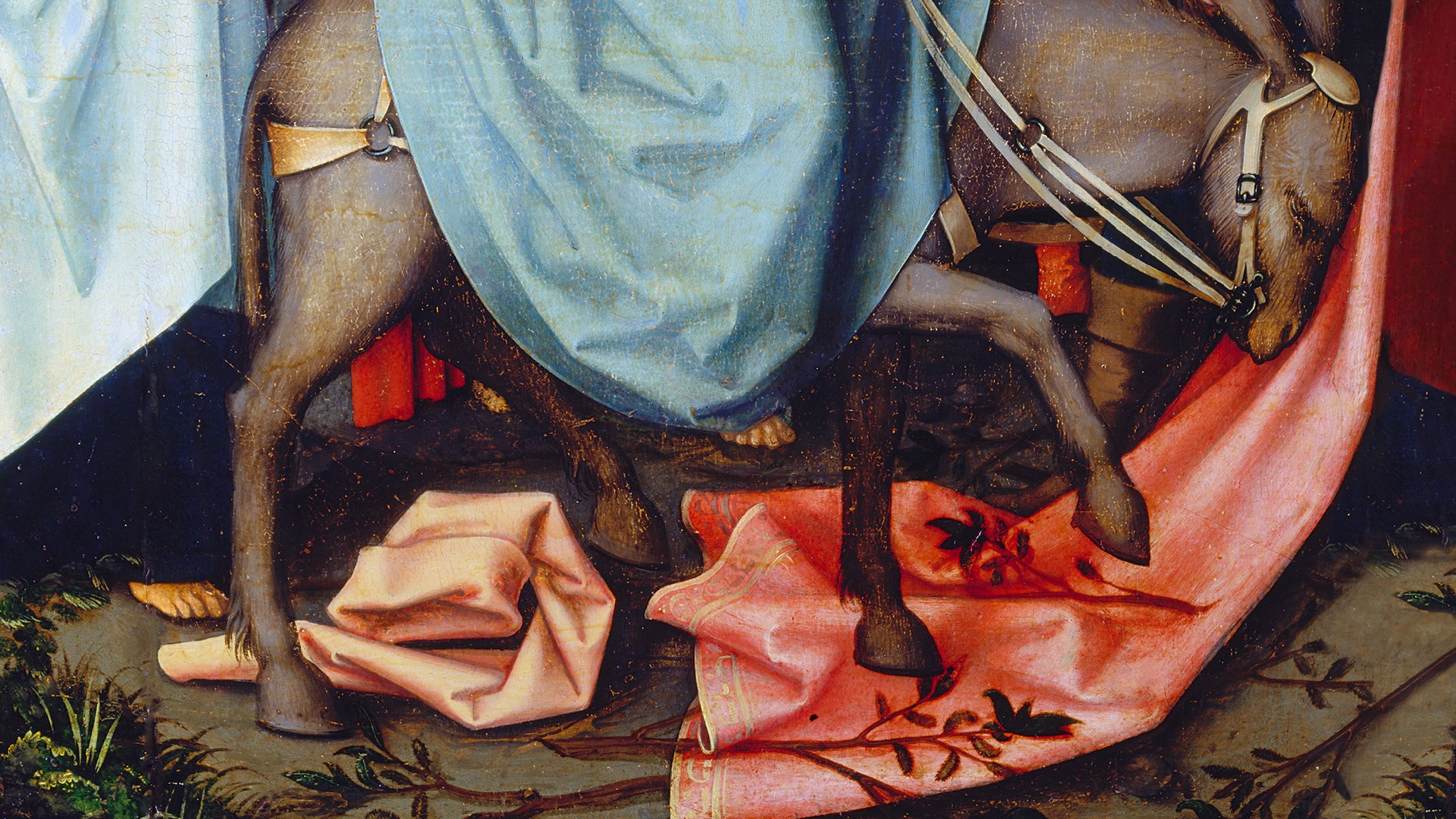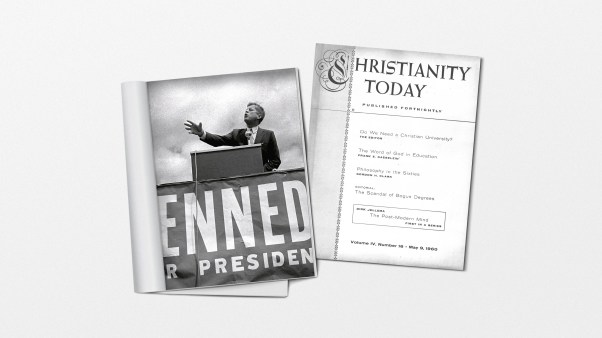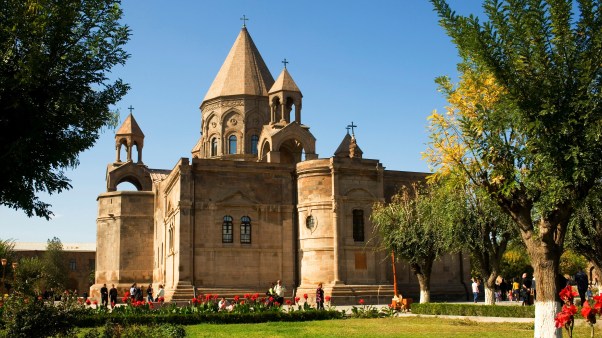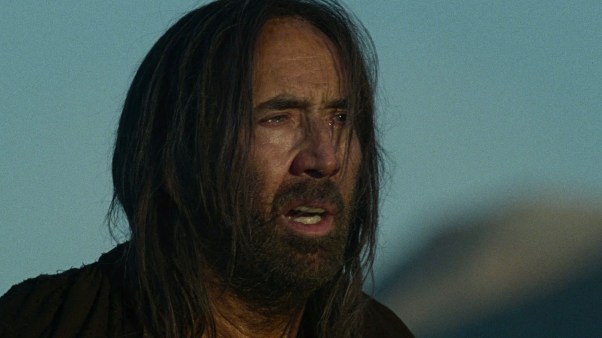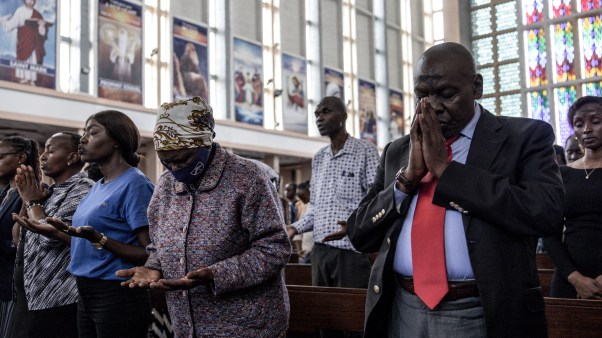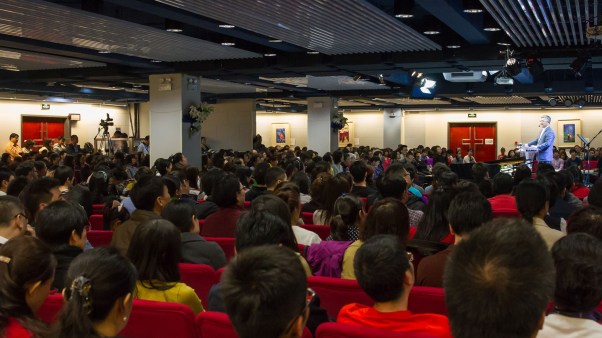Christian churches throughout the world will begin our holiest week of the year on what is popularly known as Palm Sunday. It commemorates one of the few events in the life of Jesus recorded in all four gospel stories: his entry into Jerusalem, followed by a raucous and warm welcome and a lot of waving branches. (Only John 12:13 mentions they were palms.) In Israel today, churches still reenact the journey from the Mount of Olives to Jerusalem—the route supposedly taken by Jesus all those centuries ago.
As a kid, even in the nonliturgical world of the Black Baptist tradition, I recall receiving my palm branch and dutifully marching into the sanctuary with a palm in one hand and my unintelligible King James Bible in the other. This year on Palm Sunday, I will be the adult trying to make sure my children don’t use the palms as weapons to tickle and annoy their siblings.
As I study this story in Scripture, I’m struck by the fact that the primary symbol for this day—a palm—was not chosen by Jesus.
John writes, “They took palm branches and went out to meet him” (John 12:13). Why did the crowd choose palm branches? It could simply have been that palms were nearby. But history tells us there might have been a deeper reason: Those plants were symbolically linked to military victories and Messiahship.
A generation before Jesus, when Simon Maccabee drove Israel’s enemies out Jerusalem, people celebrated by waving palm branches:
On the twenty-third day of the second month, in the one hundred seventy-first year, the Jews entered it with praise and palm branches, and with harps and cymbals and stringed instruments, and with hymns and songs, because a great enemy had been crushed and removed from Israel. (1 Mac. 13:51, NRSV)
The Testament of Naphtali, another book written by Jews of that period, also discussed palm branches in the context of messianic expectation. So when Jesus entered Jerusalem, people used them to interpret his identity. He was another Simon Maccabee—a long-hoped-for king who would drive out the Gentiles.
All the Gospels are clear that Jesus chose a symbol, a way for his people to make sense of his kingship. But it was the young donkey, not the palm branch (John 12:14). John rightly sees the donkey as Jesus intended. It was the fulfillment of Zechariah 9:9, which says, “Rejoice greatly, Daughter Zion! Shout, Daughter Jerusalem! See, your king comes to you, righteous and victorious, lowly and riding on a donkey, on a colt, the foal of a donkey.”
Jesus picked a symbol that emphasized humility and lowliness instead of military strength. That fact should inform how we celebrate and remember his entry into Jerusalem. Of course, it would be impractical for every church across the globe to find a donkey to drag into and out of its sanctuary. But we can spend Palm Sunday reflecting on what it means to follow a king who rejected the way of violence.
As we look to the donkey, not the palm, what practices might it inspire? What aspects of American Christian culture might it critique?
I’m not arguing that all public expressions of Christianity need to be passive and nonassertive. In the public square, for example, I notice some Christians “tone policing” others and being uncomfortable with displays of emotion. Their goal is a reserved faith that never speaks plainly about the evils lurking in the hearts of people or society more broadly. Christians can and should use strong words, especially as they relate to structural injustice or personal unrighteousness.
On the flip side, I’ve noticed that some of us have become much too confident in our own discernment. We’re convinced that we are right and our enemies are not just wrong but evil. Surely Jesus hates the things we hate, doesn’t he?
Surely he wants to establish his rule through us right now, one angry tweet and fiery comment at a time. And so we pick up our palm branches and raise our shouts in support of the Jesus we’ve created in our minds, not the crucified Messiah—whose rule is rooted and grounded in love. He has become a rallying cry for our agenda, not his.
As Russell Moore writes, “Jesus is right in saying this sort of hatred and violence never leads where we think it will—to a vanquishing of all of our enemies and to a victory for ‘us,’ whoever ‘us’ is.”
We have forgotten that the world is both the object of God’s affection and a place in rebellion against its creator. Christian faithfulness involves holding these things in tension. We have granted so many exceptions to the love command that it’s almost empty of meaning. We have hoarded God’s grace for ourselves while refusing to offer it to others. All of us are shouting about Jesus but not paying attention to his own words and actions.
To be clear, I am not a killjoy. I have no desire to snatch the palm branches out of the hands of happy children or to end the long tradition of processions and hymns that mark this day. Instead, I hope that during Holy Week celebrations, we can slow down enough to think about the conflicting messages of Palm Sunday.
Jesus’ claim to be the Messiah was not simply about a goal—God’s rule over all things. He and the crowd agreed on that point. His earthly life and ministry were also about the means of accomplishing that goal: namely, sacrificial love. Jesus gave us not only the gift of forgiveness, flowing through his Passion and resurrection, but also a way to follow. That way needs to inform our public and private witness.
Stated differently, I’m worried that, in our desire to defeat enemies, we’re losing Christian virtues—the fruit of the Spirit.
If we strive to establish God’s rule through self-assertion over neighborly care, pragmatism over principle, and malice over love, then whatever else we accomplish, we are no longer following in the way of Jesus. God chose meekness, integrity, and love to gather his people. That is the message of Palm Sunday. For all the shouts of acclamation, Jesus never lost sight of the cross.
This Holy Week, then, let’s follow the one who sits atop the donkey, so that he can remind us again of the way to life eternal.
Esau McCaulley is an associate professor of New Testament at Wheaton College. He is theologian-in-residence at Progressive Baptist Church, a historically Black congregation in Chicago, and author of the forthcoming memoir, How Far to the Promised Land: One Black Family’s Story of Hope and Survival in the American South.

